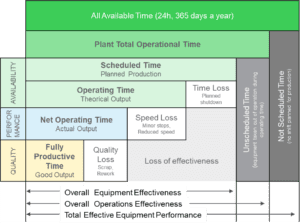Bridget Fitzpatrick is an HMI, Abnormal Condition Management and Human Factors Practice Lead for Wood Group Mustang in Houston, TX. She has 25+ years of experience in process engineering, control engineering, management, consulting, and energy management in the process industry. Her experience includes the chemical, plastics, pharmaceuticals, refining, mining and power fields. Prior to joining Wood Group Mustang, she was associated with Celanese Chemicals for 15 years.
She is a member of ISA, AIChE, HFES, and ACS. She is active on both the ISA18 (Alarm Management) and ISA101 (HMI) standards and practices committees. She is a Managing Director (ISA 18 committee) on the ISA Standards and Practices Board. Bridget is a graduate of MIT with a Bachelor’s Degree in Chemical Engineering. She also holds a MBA in Technology Management from the University of Phoenix. She has made multiple presentations and has multiple publications in the areas of HMI and alarm management.
It is funny how careers unfold. I have been pretty heavily involved in the development of standards over the last 10-15 years, dabbling at it a bit longer. I became interested in pure self-defense. As a young process engineer, I got involved in PHAs (Process Hazard Analysis) and the early start of functional safety in the chemical industry in the early 90s. Figuring out how to comply with ISA84 as it emerged without the wealth of software and guidance documents was a challenge. It was an interesting time and watching the technology mature is a privilege in many ways. For me, what emerged was a true interest in developing standards and guidance documents that capture the minimum acceptable and best practices and define both in a way that provided a tool to herd engineers into a consistent execution model.
A good follow on to the PHA support that I had been doing was to provide input to the ASM Consortium when the operating company that I worked for became a member. My areas of research and support were heavily alarm management, HMI and technologies to support the operator of the future. I had solved a wide variety of technical problems, but even early on, I was more intrigued with solving the human element of the equation. So my passion became providing the best alarm and HMI design to support the operator experience. And to translate that to the bottom line with better decision making and better outcomes. The collaboration with the ASM Consortium was interesting, with some of the best and brightest trying on new theories and tools and evaluating successes and failures. We worked hard to shoehorn new ideas into old technologies and learned some key lessons about being early adopters and the folly of stupid engineering tricks that did not make sense or adequately support the operator. And we saw large gains across the board.
When I heard of emerging ISA standards committees for alarm management and later for HMI, I was on board. I wanted to ensure that my company and later my consulting clients could live with and benefit from the standards under development. Working with ISA, I found again some of the best and brightest toiling to move the process industry forward. It sounds corny, but moving the technology forward is one of the most rewarding aspects of a career in automation.
I think that it is an interesting story to tell, to highlight some of the emerging best practices, to link people to some of the people on the front lines of development, to show how to get involved, what is coming next and share some lessons from the journey.
To learn more on this topic of HMI’s and Alarm Standards and best practices from Bridget Fitzpatrick, join us at the CONNECT 2016 Automation Conference in New Orleans. Register here



